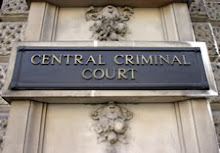Crime and punishment - the very British way
Knowing that the streets of London are rife with the likes of Sherlock Holmes, Hercule Poirot, Rumpole and others, you'd think any arch-criminal would just pack up and move to France, land of Inspector Clouseau.
But still the London baddies persist in trying to murder vicars and even blackmail royalty. So let's follow in the footsteps of a wannabe criminal and see what happens.
Any tour of detective London should start at the Houses of Parliament (www.parliament.uk). This is where laws are made, and without laws, there is no crime. The wonderfully Victorian Gothic buildings on the banks of the Thames contain the House of Commons and the House of Lords (when inside the warren of buildings, you can tell the difference because the carpets in the House of Lords are red – and the average age is 152).
The public can sit in the gallery and live the excitement of new laws being made (and by extension, new criminals popping into being). But be warned, this is serious business.
I once watched a session in which one member was lamenting long and hyperbolically about a new disaster threatening to destroy the British government. I sat on the edge of my seat craning to hear the nature of this pernicious menace.
The MP finally spit it out: there simply weren't enough accountants to go around. I laughed. And was evicted. You have been warned.
Once you have the crime, and the criminal, you need the detective. Going the traditional route, the place to look is Scotland Yard (met.police.uk), fictional home to Inspector Lestrade, Chief Inspector Japp and others. The Yard, now known as the Metropolitan Police, has moved around since it was founded in 1829, but it's always been walking distance to the Houses of Parliament. Whether to pick up new laws or new criminals is for you to decide.
Scotland Yard has one of the creepiest crime collections in the world: the Black Museum. It contains evidence collected from some of London's most notorious cases, including Jack the Ripper, Dr. Crippen and the death masks of people hanged at Newgate. It is only open to special visitors, but you can see some exhibits online (met.police.uk/history/crime_museum.htm).
So, we have the crime and the detective, now we need the trial. The address of choice for the discerning fictional criminal is the Old Bailey (cityoflondon.gov.uk/corporation/our_services/law_order/central_criminal_court.htm).
The Central Criminal Courts, on Old Bailey Street, also in central London, consist of about a dozen courtrooms. The public is allowed in free, but leave cameras, cell phones etc., at home (or, for £1, at the pub across the street).
This is where Oscar Wilde, the Krays and the London bombers were tried. Alleged spies are interspersed with alleged forgers, thieves and, as seen in one case, people who allegedly spike shepherd's pie with LSD. The guards themselves are great entertainment. They know which trials are the best to watch, and if you ask politely, they might even tell you some of their favourite Old Bailey stories.
Be warned though, the perennial favourite is the one about the judge who cited a man who had grabbed a guard by the genitals for "taking the law into his own hands."

No comments:
Post a Comment